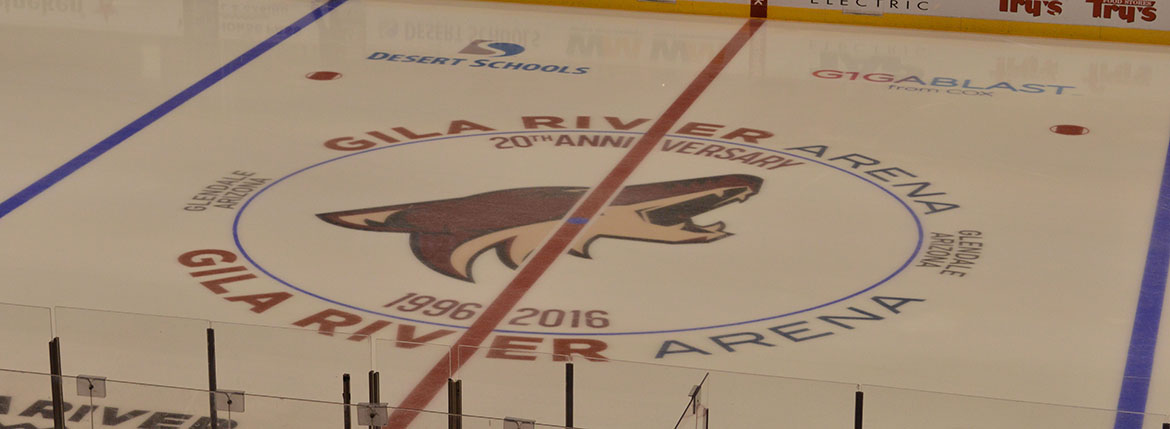
Safety concerns, maintenance issues and the expiration of the Arizona Diamondbacks’ lease at Chase Field in 2027 are casting doubts on the team’s long-term future in downtown Phoenix. (Photo by William Wilson/Cronkite News)
PHOENIX – The Arizona Diamondbacks continue their most successful postseason run since their 2001 World Series victory Tuesday night, just one win away from the franchise’s second World Series berth.
Led by hot hitting and big performances from young talent, it’s clear the team’s foundation is strong. However, the club’s future at Chase Field might not be on such solid footing.
If the Diamondbacks cannot find a way to fund much-needed upgrades for its longtime home in downtown Phoenix – which hosted the championship-clinching Game 7 in 2001, Game 3 of this year’s NLDS and Games 3 and 4 of NLCS – the team could soon be breaking ground on a new stadium’s foundation somewhere else in the Valley.
Chase Field, the stadium formerly known as Bank One Ballpark, is one of the oldest ballparks in the National League and its quality continues to fall behind its counterparts across the country. To address its age, Diamondbacks President and CEO Derrick Hall has openly lobbied for support from Maricopa County or the City of Phoenix in the form of public funds for renovations.
Some worry that because the club’s lease on the stadium expires in 2027, the clock to ensure the Diamondbacks remain at Chase Field long term is inching closer to midnight.
Steve Patterson, a former athletic director at Arizona State and former professional sports executive who has consulted on previous stadium negotiations in the Valley, told Cronkite News the team’s presence downtown has benefitted the area since the team’s inception in 1998.
“Certainly if I’m the city of Phoenix, I want them to stay in the community,” Patterson said.
However, for the past two seasons, the team has been unable to open or close the stadium’s retractable roof with fans in the building due to safety hazards. Lights have begun to burn out across the stadium, and the team is reliant on the same air conditioning as other major venues downtown throughout Phoenix’s increasingly hot summers.
Pitcher Merrill Kelly, who started Monday’s critical Game 6 victory in the NLCS in Philadelphia, said the stadium was so hot during a game in early September that he had to change jerseys partway through his start and that the heat could be contributing to cramps he was experiencing during his starts.
“I don’t know if it’s just the stadium being old, because the temperature has definitely dropped in the past couple of weeks,” Kelly said. “I know it’s still a big metal box that we’re in. I’m definitely sweating more here than I am other places.”
The team has acknowledged that the stadium requires upgrades and has been steadfast that it would prefer to stay at its current downtown Phoenix location, but the solution to the stadium’s woes could ultimately be relocation rather than renovation.
Hall told the media in February that the team’s location after its lease at Chase Field expires remains “up in the air.”
“If there’s somebody else that wants to step up, and the team decides it’s in their best interest to go to one of the other suburban communities or onto tribal land, that’s a decision they’ve got to make,” Patterson said.
The Diamondbacks began mulling the possibility of relocation years ago after a deal with private investors to build a new stadium fell through in 2016, prompting the team to sue Maricopa County over control of the stadium’s future.
The lawsuit was resolved in 2018 when the team and the county reached an agreement allowing the Diamondbacks to look elsewhere for a new home in exchange for dropping the suit, which sought $187 million from the county for repairs to Chase Field.
Were the Diamondbacks to stay at Chase Field and undergo renovations, Hall has said the updates would cost upwards of $400 million and would include developing the area surrounding the stadium to include attractions like hotels and restaurants.
Mixed-use development around stadiums, sometimes called entertainment districts or “mini-cities,” has become standard practice for stadium construction or renovation projects across the country.
The Arizona Coyotes had such a stadium and entertainment district in mind for Tempe, but the plan was rejected by the city’s voters in a May special election.
J.C. Bradbury, a professor of economics, finance and quantitative analysis at Kennesaw State University whose research is centered around the impact of public funding for sports facilities, told Cronkite News that districts surrounding stadiums don’t often generate new income for cities, but rather just divert it.
“Most of the people that visit the stadium are also local people,” Bradbury said. “When I go into a stadium district and spend money, that money was previously being spent outside the district.”

As the Arizona Diamondbacks seek their second World Series berth in NLCS Game 7, the team faces an uncertain future at the aging Chase Field. (Photo by William Wilson/Cronkite News)
Hall told the Arizona Republic in September that the team and its owner, Ken Kendrick, were willing to front over three quarters of the costs of the stadium’s required renovations, but that the team has not been assured it will receive public assistance.
Bradbury said that there is little upside for a community to invest public funds into stadiums
“Few topics have been studied by economists more thoroughly over time,” Bradbury said. “And the evidence is universal: sports stadiums have very limited economic impacts on communities, particularly larger communities.”
Large communities like Phoenix, Bradbury said, have a multitude of options for spending on entertainment or leisure and that professional sports teams don’t inspire much unique spending.
“When the Diamondbacks came to town, I didn’t all of a sudden have this hidden money buried in a coffee can in my backyard that I brought out to spend at the stadium,” he said. “I stopped spending it elsewhere. It’s just reallocated local spending.”
The L. William Seidman Research Institute at ASU, a group often commissioned by professional sports teams in Arizona to calculate the economic impact of stadiums and arenas, found in 2017 that the team had generated $5 billion in gross state product since 1996.
There is another option for the team to receive public support for updates at Chase: directly from taxpayers. In 2021 the Arizona state legislature passed HB2835, allowing the team to put an up to 9% tax on anything sold at Chase Field, which could be used to underwrite a public bond to fund stadium upgrades. Hall told The Arizona Republic in September that triggering the tax would be a “last-ditch effort.”
It is unclear what role the Diamondbacks’ recent playoff success will play in ongoing negotiations between the county and the team. On one hand, it could generate significant funds in the form of increased ticket, concession and merchandise sales for the team to put toward improvements. It could also make the county or city of Phoenix feel it must do more to secure the team’s future downtown.
“Baseball gives you a platform to tell the story about (your) community, which is certainly a benefit,” Patterson said. “There’s plenty of communities out there that see the benefit of being perceived as a major league community.”


